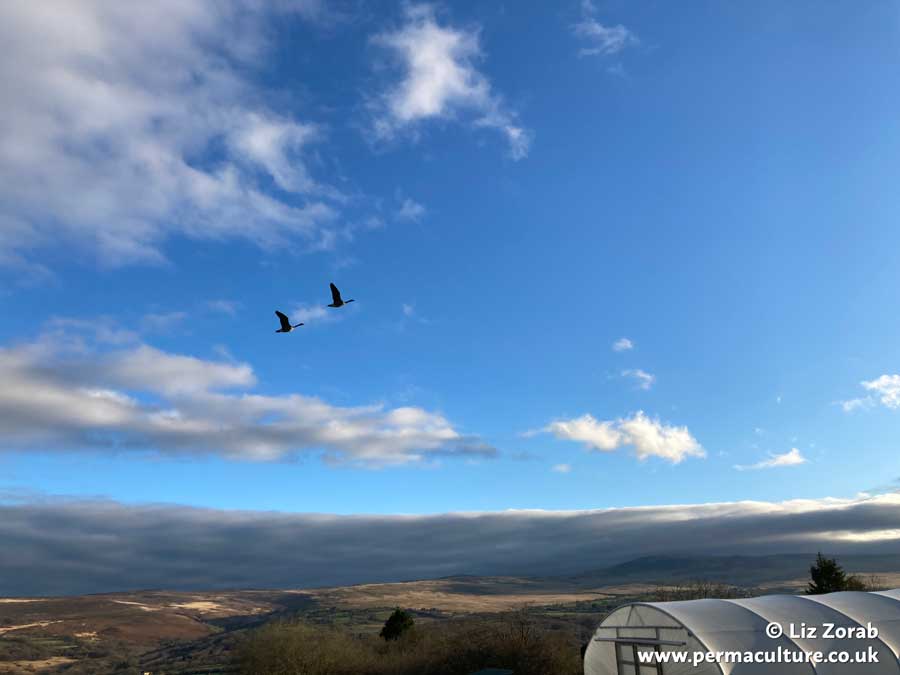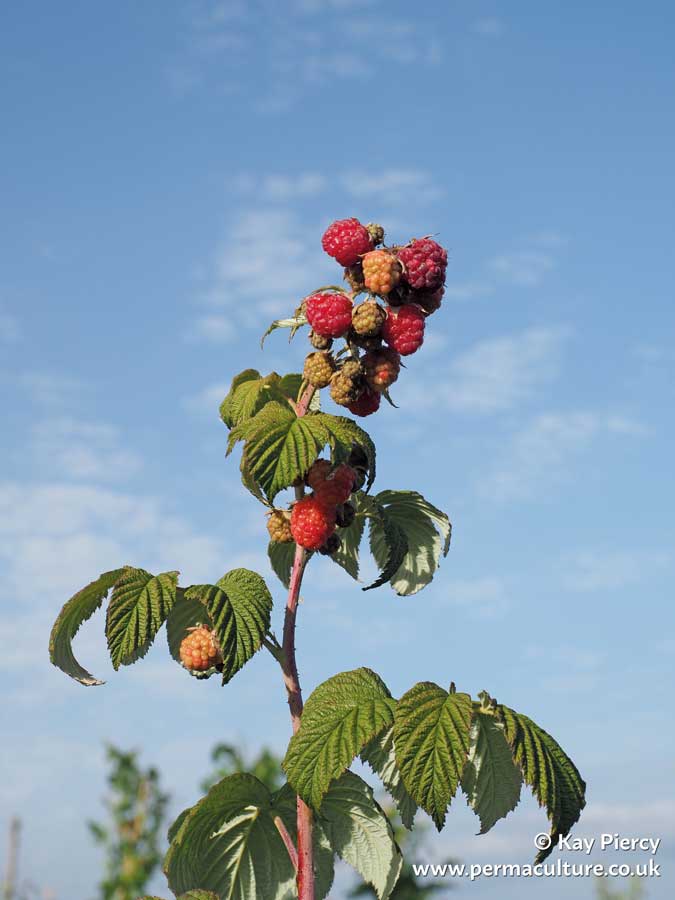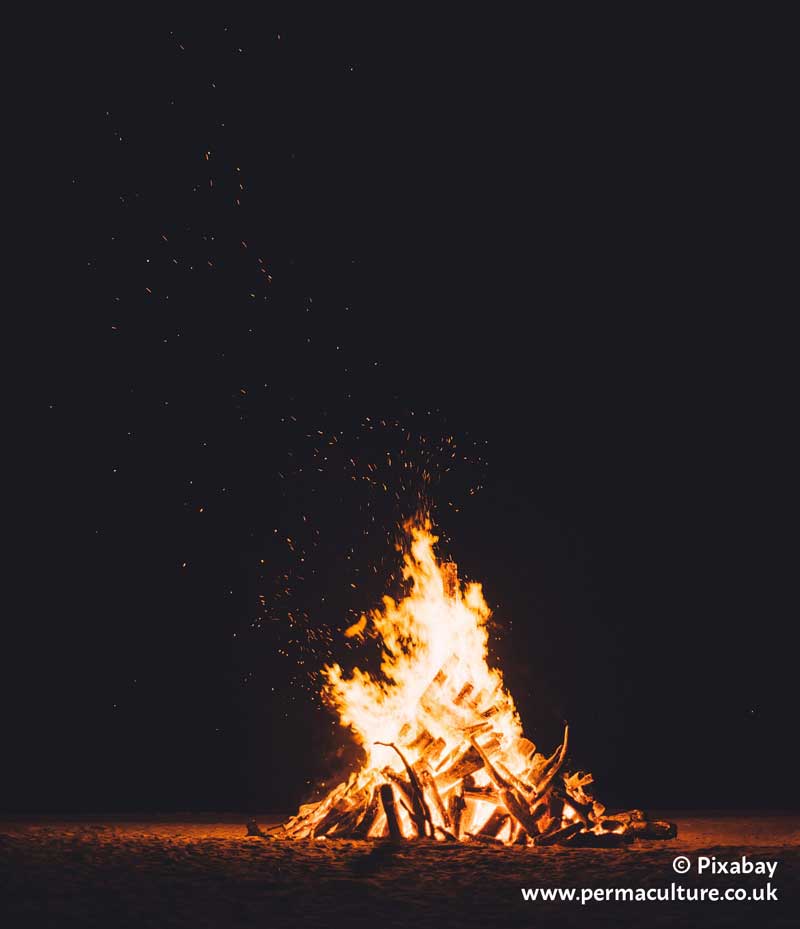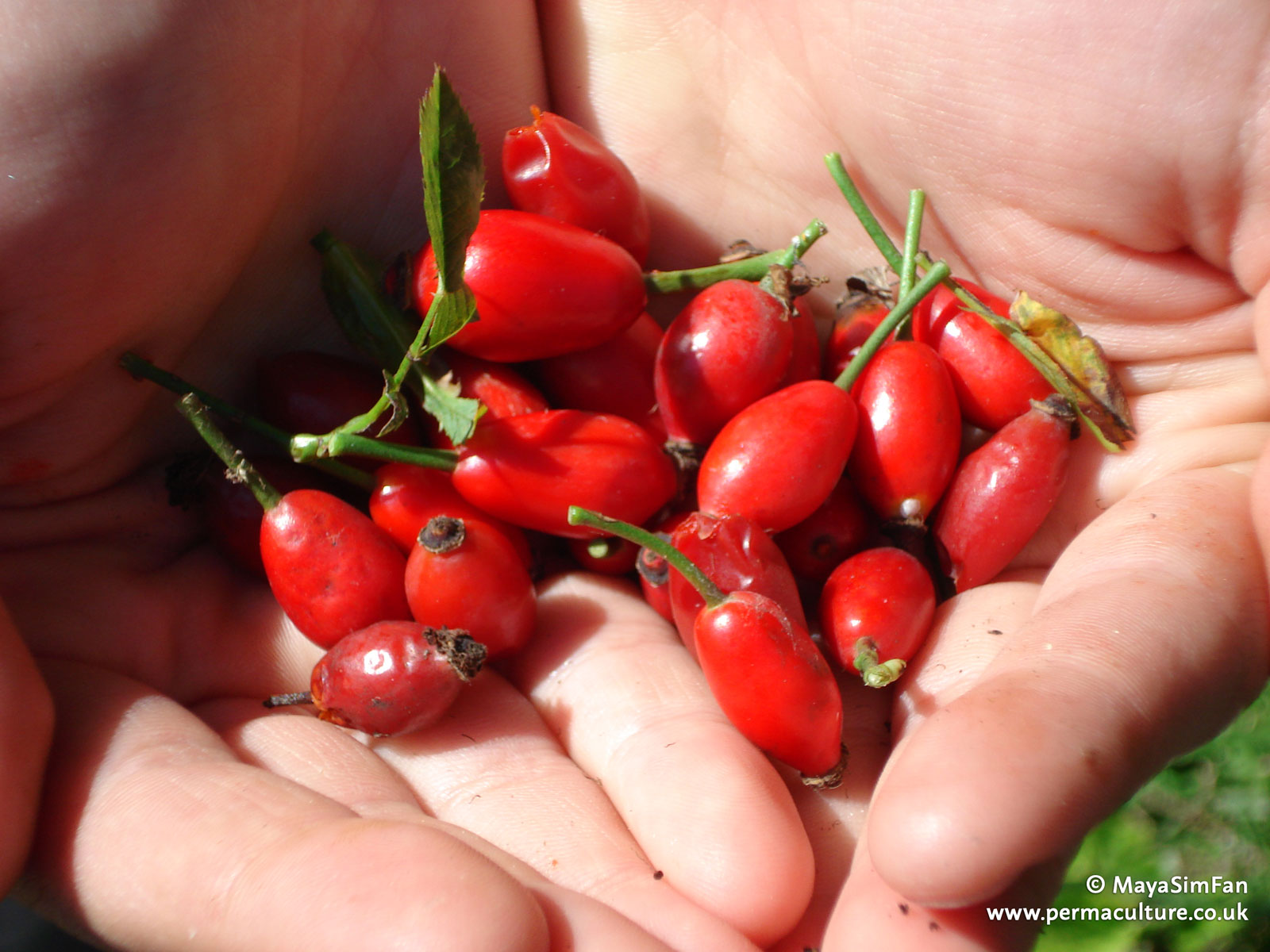Kiko Denzer and I were hired to build a heater in a greenhouse for some very avid gardeners. They had experimented with using a wood stove but there simply wasn’t enough heat retained for the stove to heat the greenhouse from one day to the next throughout the winter. Our task was to incorporate the old wood stove, mostly taking advantage of the glass door and firebox it offered, and plug it into a system with channels and enough mass to absorb sufficient warmth to heat the greenhouse with one firing a day. This article chronicles that build and the results.
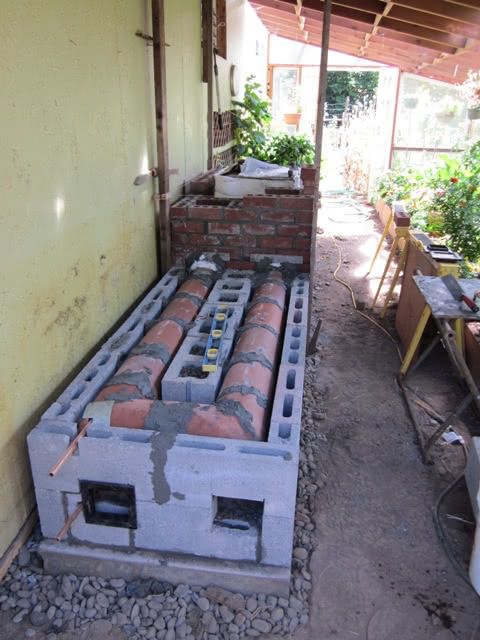
Here you can see the long path that the smoke makes through the bench after it has exited the original stove. All of the heat retained by the bench would have otherwise gone straight up the chimney. There is a bi-pass damper which acts as a valve and allows for a straight shot to the chimney when you are making a cold start.


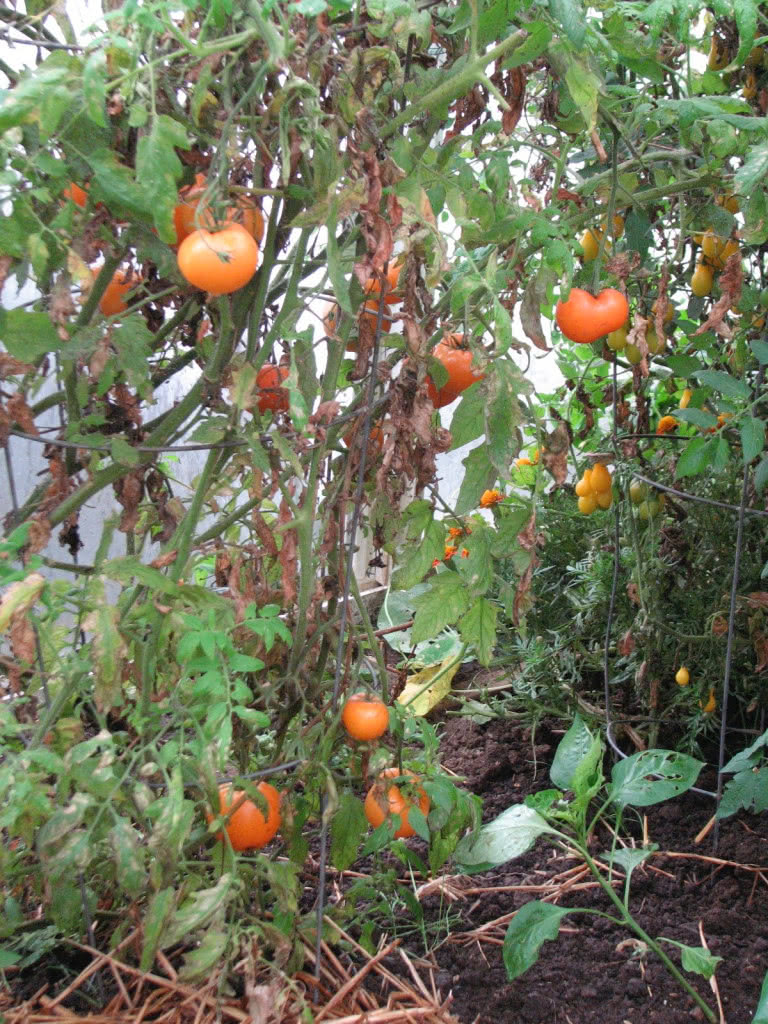
The following photos were taken on December 3rd 2012 in the Willamette Valley of Oregon. You can see tomato and pepper plants maturing inside the greenhouse while the ground outside is covered in snow.

Dry lay-out. I had carefully drawn out the heater and we had poured the pad to planned dimensions… but it is always still important to check that everything fits together as planned.

The original wood stove that inspired the project. I used a 4 x 1/2inch grinder with a metal cutting disk to cut out the baffle shelf it had inside.
We laid up as many courses as we could behind the wood stove before moving it into place because we knew we wouldn’t be able to get there to work once it was there.

Now we have placed the wood stove which will act as our fire box. We are examining how the linteled course will go.

You can see in this picture and the subsequent one that we have wrapped the stove in 1 inch ceramic wool blanket. This is both to ensure that the metal stove has adequate room to expand and contract within its new brick housing and also to raise temperatures in the firebox which will contribute to a cleaner burn. In this photo, we are beginning to fully enclose the stove with brick and beginning to define the down and up-draft channels that will enter into and leave the bench.
A cleanout was installed at the bottom of the downdraft (the square box bottom left). We are using a soot door by Pisla and a masonry frame that surrounds it.

Detail of first flue liner plugging into brick work. We used ceramic wool to help seal the union while giving the two different materials room to move when heated. The flue tiles are mortared to each other but very minimally mortared to the bench surround.

The next couple of photos show us marking a flue liner for an angle cut using water in a wheel barrow to give us a mark all around the shape. Each bringing the flue liner down to our marks.
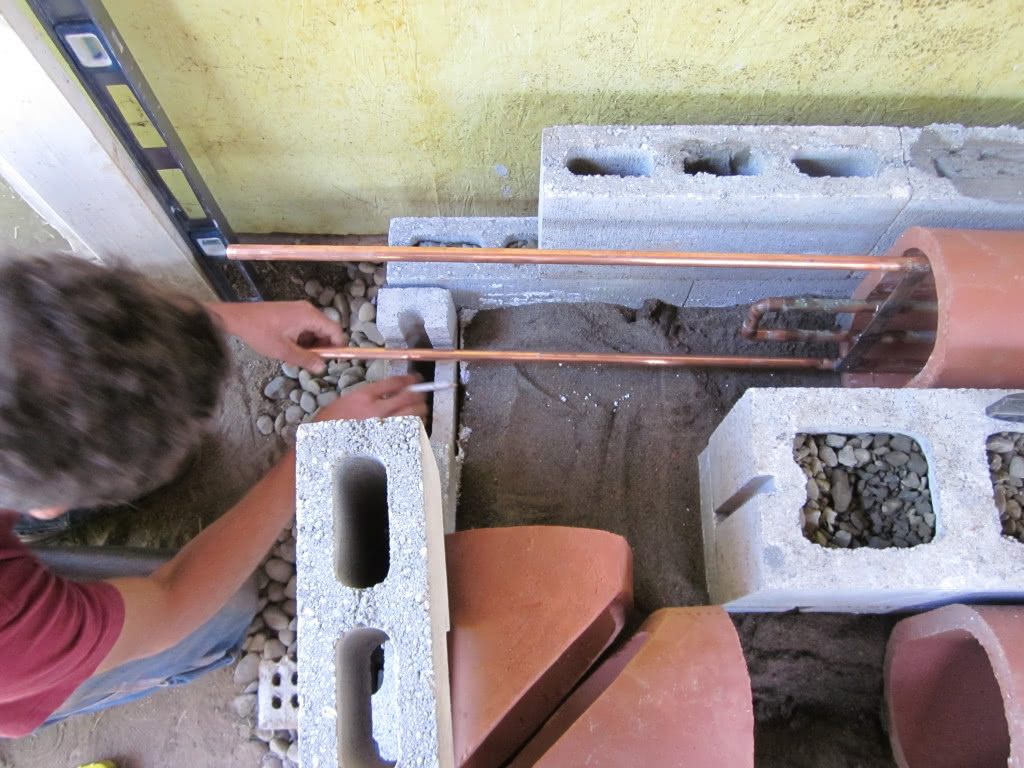 Working out the corners and also inserting the copper heat exchanger that Ed had made to warm water up for watering starts and seedlings.
Working out the corners and also inserting the copper heat exchanger that Ed had made to warm water up for watering starts and seedlings.

Flue liner assembly is completed. Cleanouts at end of bench to access both horizontal runs. Framing up and reenforcing the concrete pad which will act as the bench top.
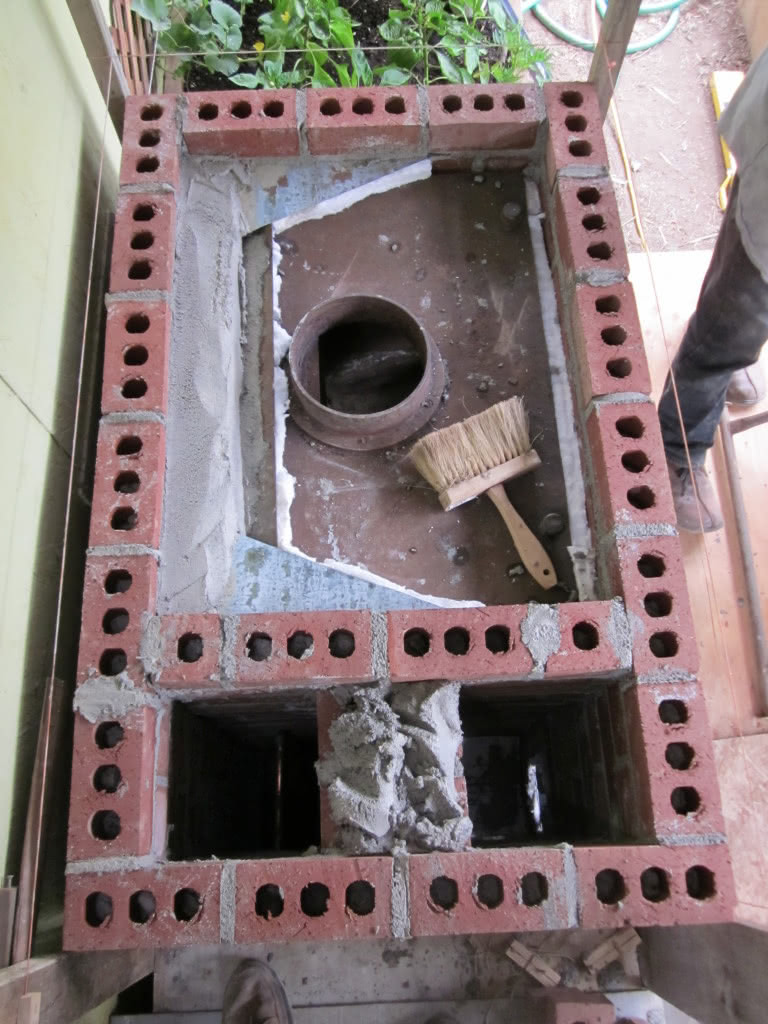
This is an important photo which shows the basic design. You can see the firebox and the bell that will be formed above it, and the down and up-draft channels. The heater has been designed around the size of the brick units to minimize cuts and complexity.

The bi-pass damper is put into place. When open, it gives the flue gases a direct shot up the chimney.

We have used slabs made of castable refractory to cap off the ‘bell’ above the firebox and the entrance into the downdraft. An anchor plate with a shut-off damper has been installed for the chimney to plug into.

The heater is near completion.
To read the full article with more photos visit www.handprintpress.com/featured/greenhouse-heater
Max is a builder, craftsperson and musician and his services include building masonry heaters, wood-fired bake ovens, round-pole carpentry, and website design.
